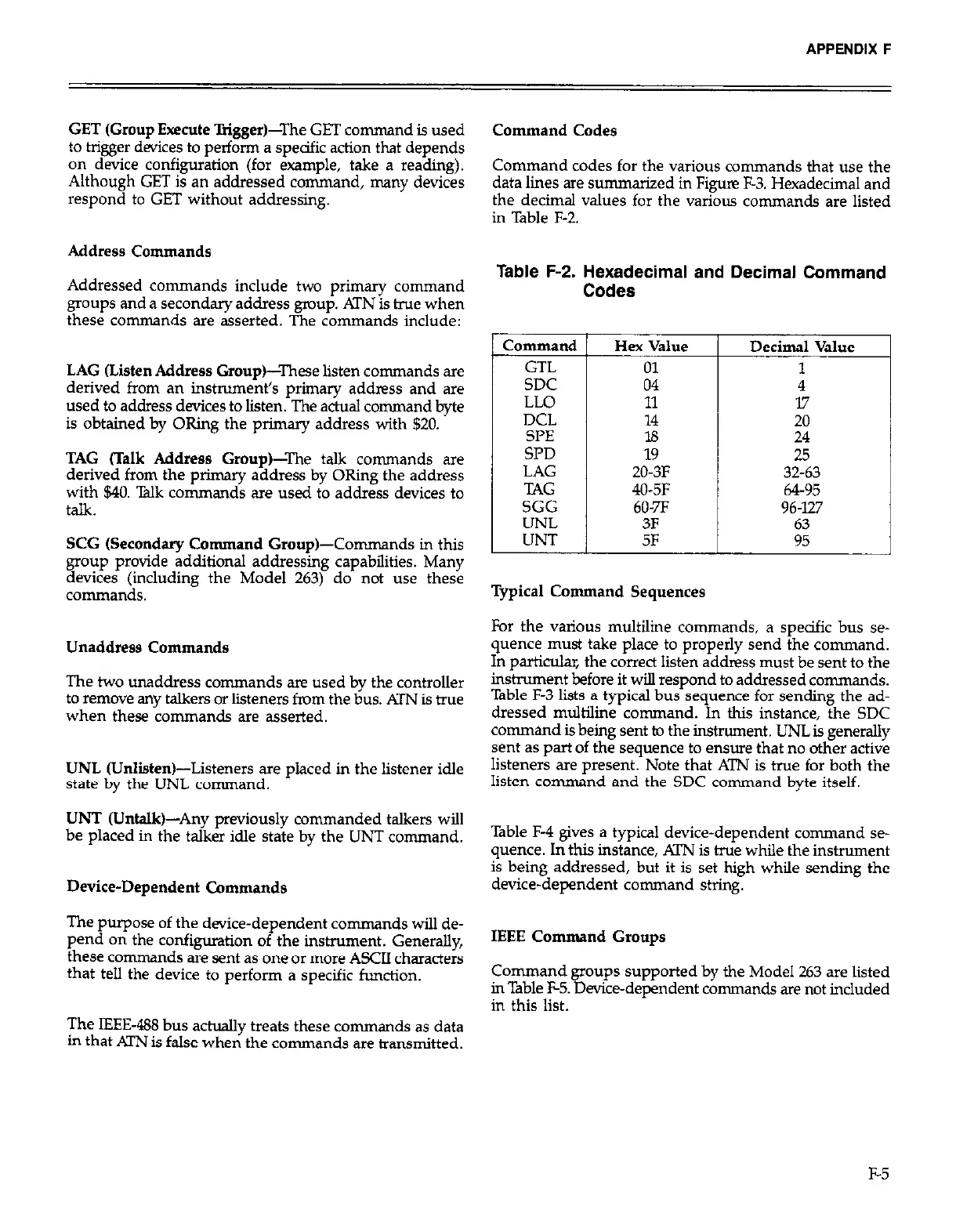APPENDIX F
GET (Group Execute Trigged-The GET comman
d is used
to trigger dwices to perform a specific action that depends
on device configuration (for example, take a reading).
Although GET is an addressed command, many devices
respond to GET without addressing
Address Commands
Addressed commands include two primary command
groups and a secondary address group. ATN is true when
these commands are asserted. The commands include:
LAG (Listen Address Group)--These listen commands are
derived from an instrument’s primary address and are
used to address devices to listen. The adual command byte
is obtained by ORing the primary address with $20.
TAG (Talk Address GroupFfhe talk commands are
derived from the primary address by ORing the address
with $40. Blk commands are used to address devices to
talk.
SCG (Secondary Command Group)-Commands in this
group provide additional addressing capabilities. Many
devices (including the Model 263) do not use these
commands.
Unaddress Commands
The two unaddress commands are used by the controller
to remove any talkers or listeners from the bus. ATN is true
when these commands are asserted.
UNL (Unlisten)--Listeners are placed in the listener idle
state by the UNL command.
UNT KJntalk)-Any previously commanded talkers will
be placed in the talker idle state by the UNT command.
Device-Dependent Commands
The purpose of the device-dependent commands will de-
pend on the configuration of the instrument. Generally,
these commands are sent as one or more ASCII characters
that tell the device to perform a specific function.
The IEEE-488 bus actually treats these commands as data
in that ATN is false when the commands are transmitted.
Command Codes
Command codes for the various commands that use the
data lines are summarized in Figure F3. Hexadecimal and
the decimal values for the various commands are listed
in Table F-2.
Table F-2. Hexadecimal and Decimal Command
Codes
Sl’D 19 25
LAG 20.3F 32-63
TAG 40-5F 64-95
SGG 60-7F 96-127
UNL
3F
UNT
5F
Typical Command Sequences
For the various multiline commands, a specific bus se-
quence must take place to properly send the command.
In particular, the correct listen address must be sent to the
instrument before it will respond to addressed commands.
Table F-3 lists a typical bus sequence for sending the ad-
dressed multiline command. In this instance, the SDC
command is being sent to the instrument. UNL is generally
sent as part of the sequence to ensure that no other active
listeners are present. Note that ATN is true for both the
listen command and the SDC command byte itself.
Table F-4 gives a typical device-dependent command se-
quence. In this instance, ATN is true while the instrument
is being addressed, but it is set high while sending the
device-dependent command string.
IEEE Command Groups
Command groups supported by the Model 263 are listed
in Table F5. Device-dependent commands are not included
in this list.
F-5

